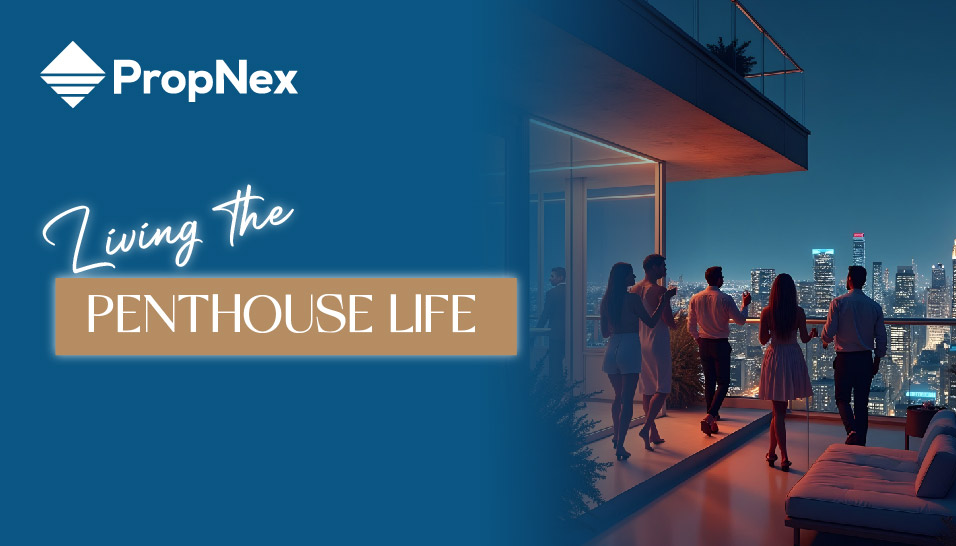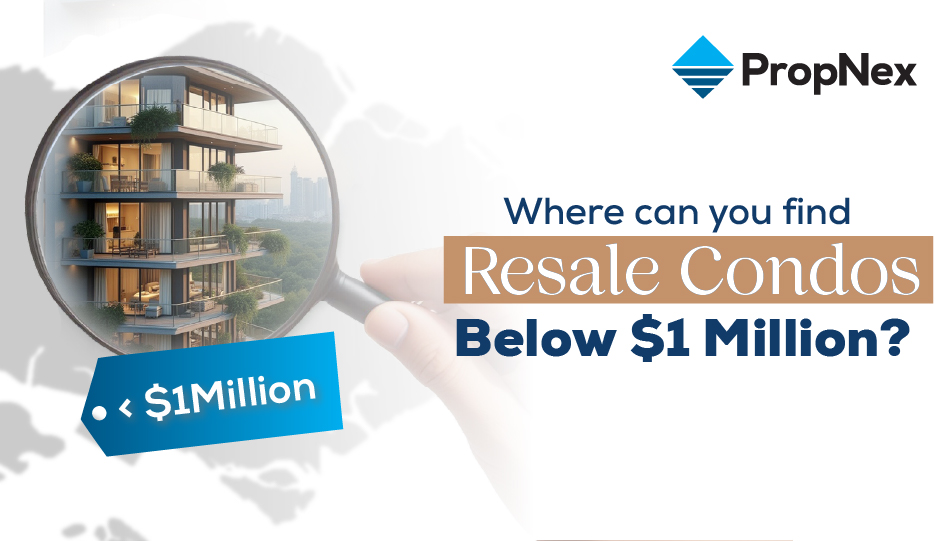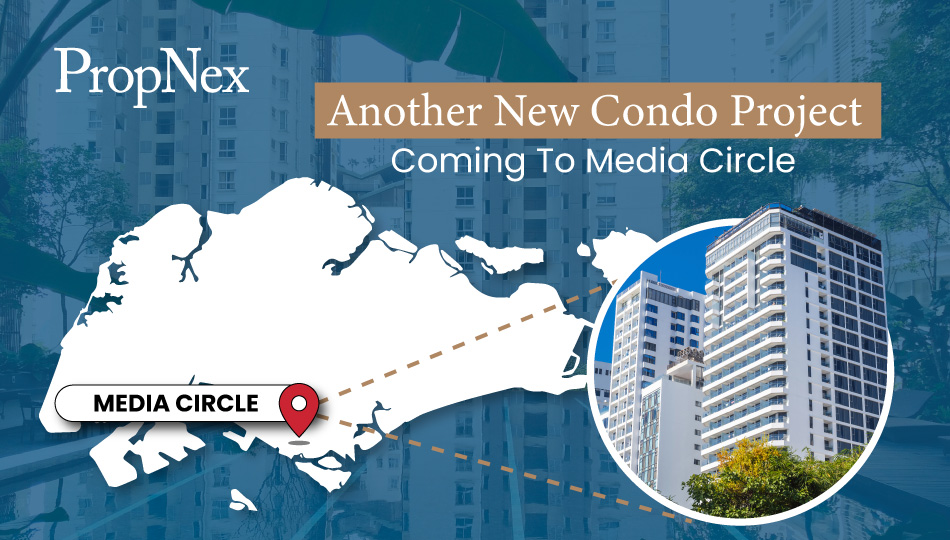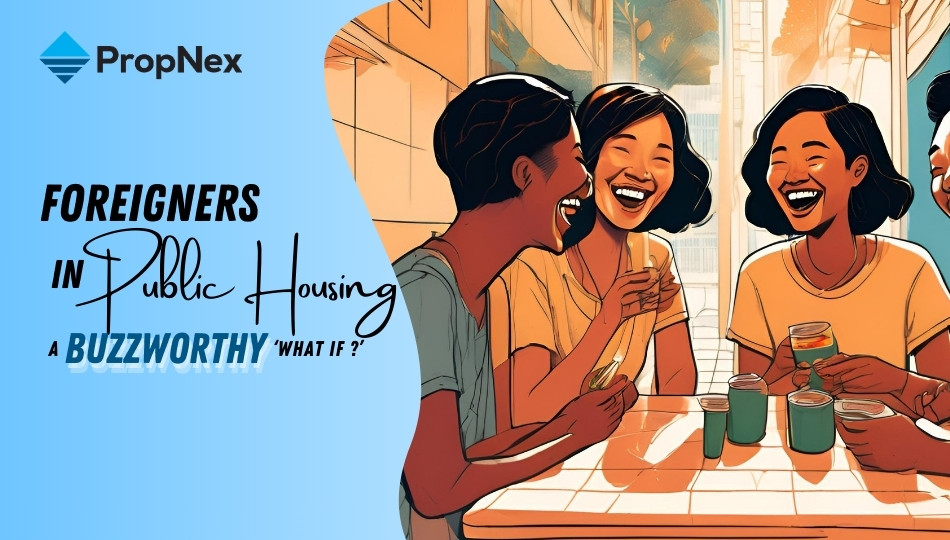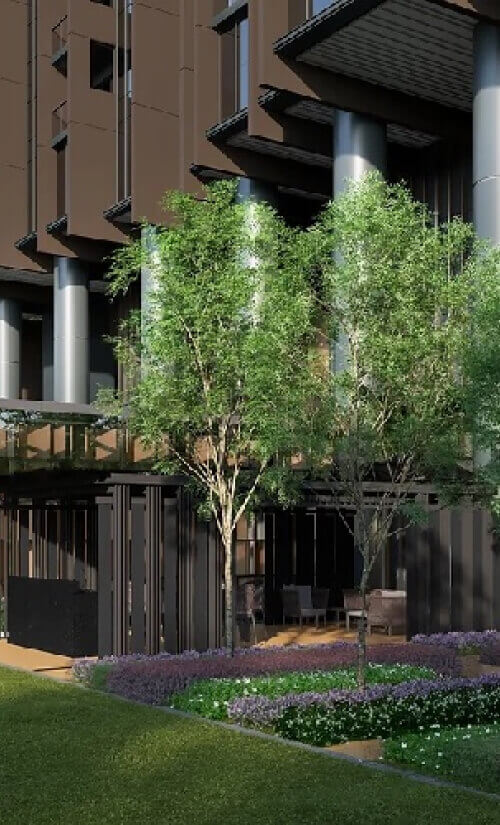PropNex Picks
|February 04,2025The Evolution Of Showflats: How Developers Sell The Dream
Share this article:
Imagine walking into a space where every detail feels carefully crafted for you. The warm glow of soft lighting highlights sleek marble countertops, and the scent of fresh flowers wafts through the air. You can almost picture yourself unwinding on the plush sofa, sipping coffee while gazing out at a stunning view. This is the magic of a showflat - where developers don't just sell properties, they sell dreams.
But this wasn't always the case. Decades ago, showflats were functional, unadorned spaces. Buyers were expected to rely on imagination alone to picture their future homes. The focus was on showcasing layout and structure, not inspiring a lifestyle.
As competition in the property market intensified, showflats began evolving into sophisticated marketing tools. Today, they're curated to appeal not just to the logical mind but to the emotional heart. Developers blend design, technology, and even psychology to craft spaces that feel aspirational yet attainable - capturing the buyer's imagination and influencing decisions.
Showflats have come a long way from their humble beginnings. Today, they're more than just spaces to view - they're carefully crafted experiences designed to inspire and captivate. So, how did they transform into such powerful tools for selling dreams? Let's dive in and find out.
You only get one chance to make a first impression, and for developers, the stakes couldn't be higher. The moment a buyer steps into a showflat, they're not just seeing a property - they're stepping into a vision of what their life could look like. The layout, the furnishings, the lighting, even the subtle background music - all of it is designed to create an emotional connection that lingers long after they leave.
It's no coincidence that showflats are styled to look picture-perfect. A cosy armchair by the window invites thoughts of lazy Sunday mornings, while a sleek kitchen island hints at sophisticated dinner parties. These elements aren't just about aesthetics - they're about storytelling. Developers use designs to tap into buyers' aspirations, creating a sense of "I want this life" that's hard to shake.
And there's science to back this up. Studies show that emotions play a significant role in decision-making, especially for major purchases like a home. A well-staged showflat can help buyers overlook minor flaws - like a smaller room or less-than-ideal view - because the emotional connection makes the property feel "just right."
Showflats also bridge a critical gap between imagination and reality. Buyers often struggle to visualise how an empty space might work for them. By showcasing a fully furnished, functional, and beautiful home, developers make it easy for buyers to see themselves living there. It's not just a home - it's their future, wrapped up in an irresistible package.
Ultimately, the goal of a showflat isn't just to sell a unit - it's to sell a feeling. Developers know that if buyers can see themselves in the space, half the battle is already won.
Before showflats became the polished, lifestyle-focused showcases we are so familiar with today, they were simple, no-frills spaces. Imagine stepping into a bare unit with no furniture in sight and just bright lighting. These early showflats were purely functional, designed to provide buyers with the basics: a sense of the layout, dimensions, and structural elements of the unit.
Back then, the idea of staging a showflat was not as extensive as today. Buyers were expected to rely mostly on their imagination. Would their bed fit in the master bedroom? Could they squeeze a dining table into the corner? Many brought along measuring tapes to figure it out for themselves.
I'm more used to today's showflats. However, I remembered when I was really young (FYI: I'm 33 this year), and when my parents brought my siblings and I to visit showflats, that was exactly the scenario. ?? How things have changed today.
This basic approach made sense at the time. For one, buyers weren't as focused on lifestyle or aesthetics. Their priorities leaned towards practicality - location, price, and functionality were the deciding factors. Moreover, the property market was probably less competitive, and as such, developers probably didn't see the need to go the extra mile in presentation.
However, this "minimalistic" strategy had its limits. Without furniture or dcor, it was hard for buyers to truly picture themselves living in the space. The blank canvas approach often left homes feeling impersonal and cold, which didn't do much to ignite an emotional connection. Developers soon realised they needed to do more to capture buyers' imaginations and help them visualise the full potential of a property.
This marked the beginning of a significant transformation in how showflats were designed and presented, paving the way for the highly stylised spaces we see today.
As the property market matured, so did buyer expectations. Developers began to realise that buyers didn't just want a roof over their heads - they wanted to envision a better, more aspirational lifestyle. This marked a turning point for showflats, as they shifted from purely functional spaces to curated showcases of design, luxury, and inspiration.
Interior stylists and designers were brought in to transform showflats into visually stunning spaces that spoke directly to buyers' desires. Sleek furniture, high-end finishes, and perfectly coordinated dcor became industry standard. Every detail, from the colour of the walls to the positioning of a vase on the coffee table, was carefully planned to evoke a sense of sophistication and comfort.
The strategy was simple yet powerful: create an environment that buyers aspire to, one that reflects the lifestyle they hope to achieve. For young professionals, this might mean a modern, minimalist apartment with cutting-edge appliances and open spaces for entertaining. For families, it could be a warm, inviting home with an abundance of storage, soft lighting, and a cosy children's bedroom.
Developers also began to tailor showflats to specific demographics, understanding that different buyers have different dreams. High-end boutique developments leaned into opulence, featuring branded furniture collaborations, statement lighting, and even curated art collections. Mid-tier mass-market condo properties focused on practicality with a touch of style, balancing functionality with modern design elements.
The goal wasn't just to show buyers what the unit looked like - it was to show them what their life could look like. The rise of lifestyle marketing made showflats more than a sales tool; they became a critical part of the buying experience, connecting buyers to a vision that felt both tangible and aspirational.
This focus on selling a lifestyle transformed showflats into a key competitive advantage for developers. In a crowded market, a well-designed showflat could mean the difference between standing out and blending in. And as buyers' tastes continue to evolve, developers pushed the boundaries of creativity and design to stay ahead.
Showflats today do more than just look good - they tell a story. Every piece of furniture, every decorative item, and every design choice is part of a narrative crafted to connect with the buyer on a deeper level. Developers know that they're not just selling a property; they're selling a lifestyle, an aspiration, and a dream.
Take, for example, a showflat designed for young families. The children's room might feature playful, colourful furniture, a cosy reading nook, and shelves filled with storybooks and toys. This isn't just decoration - it's a message. It says, This is where your child's imagination can grow, where memories will be made. In contrast, a showflat targeting luxury buyers might include a wine cellar or a walk-in wardrobe, designed to whisper elegance, exclusivity, and success.
Developers are also tapping into the psychology of homeownership. A beautifully set dining table suggests family meals and celebrations, while a chic home office hints at productivity and success. Even the artwork on the walls is chosen to reflect the tastes and aspirations of the target audience. These design elements aren't random - they're deliberate cues aimed at making buyers feel an emotional connection to the space.
This storytelling approach doesn't just make the showflat memorable - it makes it personal. When buyers walk through a showflat, they don't just see furniture and dcor. They see a version of their future: Sunday mornings spent lounging in the living room, dinners with friends around the kitchen island, peaceful nights in a luxurious bedroom.
By creating this narrative, developers help buyers visualise their lives unfolding within the property. It's no longer just a house - it's their home, and that emotional connection can often seal the deal.
At its core, storytelling through design transforms a property from a product into a personal experience. And in today's competitive property market, that emotional connection is what truly sets a showflat apart.
Technology has changed the way we shop, work, and even socialise. So, it's no surprise that it's revolutionised the way we view showflats too. Gone are the days when buyers had to visit a physical location to get a feel for a property. With innovations like virtual reality (VR), augmented reality (AR), and 3D modelling, developers are offering immersive experiences that go far beyond the traditional walk-through.
The shift towards digital showflat experiences was already underway, but the COVID-19 pandemic propelled it to new heights. With physical visits restricted due to lockdowns and safe distancing measures, developers had to find creative ways to showcase properties to potential buyers. This was where VR tours, AR tools, and 3D walkthroughs stepped in to fill the gap.
Imagine putting on a VR headset and being instantly transported into a luxury penthouse, where you can "walk" through each room and admire the view from the balcony. With VR tours, buyers can explore multiple unit types or configurations without developers having to build multiple physical showflats. This not only saves costs but also offers incredible flexibility, especially for international buyers who might not be able to visit in person.
AR takes this a step further by letting buyers customise spaces in real time. Using a smartphone or tablet, this can see how different furniture pieces would look in the unit, try out various colour schemes, or even visualise structural changes. Want to see how the living room would look with a different sofa? Just swipe and switch.
Developers are also leveraging 3D virtual tours on property websites. These interactive models allow buyers to explore every corner of a property from the comfort of their homes. They can "walk" through rooms, zoom in on finishes, and even get a sense of spatial flow. For busy buyers or those living overseas, these digital tools are game-changers, making the process of shortlisting properties more convenient and efficient.
Beyond convenience, technology has also made showflat experiences more engaging. Developers are starting to incorporate smart home features into their showflats, allowing buyers to interact with the space. Imagine adjusting the lighting, temperature, or blinds with a simple voice command during your visit. These interactive elements not only impress but also give buyers a taste of modern living.
The digital revolution hasn't replaced physical showflats entirely, but it has made them more accessible, flexible, and personalised. For developers, these tools offer a way to stand out in a competitive market. For buyers, they represent a new era of convenience and customisation. And as technology continues to evolve, we can only expect showflat experiences to become even more immersive and futuristic.
In today's world, sustainability isn't just a buzzword - it's a priority. As buyers become increasingly eco-conscious, developers are weaving sustainability into the design of their showflats. From showcasing environmentally friendly materials to incorporating smart home features, the message is clear: modern homes can be both stylish and sustainable.
Walk into a contemporary showflat, and you might notice subtle but impactful green features. Recycled materials are often used in furniture and fittings, while energy-efficient lighting illuminates the space. Appliances on display aren't just there to look sleek - they're chosen for their low energy consumption and eco-friendly certifications. These choices not only highlight the property's commitment to sustainability but also help buyers see the long-term cost savings of living green.
Some developers go further, incorporating entire themes of sustainability into their showflats. Imagine stepping into a unit where indoor plants aren't just decorative but part of an air-purifying system, or where solar panels are cleverly integrated into the exterior design. Showflats like these cater to buyers who want their homes to align with their environmental values.
Smart home technology is another powerful way developers showcase sustainability. Automated systems that optimise energy use - such as motion-sensor lighting, smart thermostats, and app-controlled appliances - are becoming staples in modern showflats. These features demonstrate how buyers can reduce their environmental footprint without sacrificing convenience or comfort, all while saving money with smart homes.
While sustainability may not yet be the top priority for most buyers when choosing a home, we believe it's an area worth considering. Sustainable features not only support eco-friendly living but also offer long-term benefits, from cost savings on utilities to enhanced property value over time. By choosing a home with green credentials, buyers can invest in a lifestyle that reflects responsibility, forward-thinking, and resilience to future environmental challenges.
Sustainability also ties into broader trends in urban living. As cities like Singapore embrace green initiatives, such as eco-friendly building certifications and renewable energy policies, developers are using showflats to demonstrate how their projects align with these goals. Buyers are no longer just purchasing a home - they're investing in a lifestyle that embodies environmental awareness and a commitment to the future.
At PropNex, we actively promote sustainability, from our partnerships with like-minded developers to initiatives like tree-planting activities that support greener communities.
For developers, the emphasis on sustainability isn't just about following trends; it's about meeting the demands of a new generation of buyers who value eco-friendly living. By integrating these elements into showflats, they're not only showcasing the property's features but also inspiring a vision of a greener future.
Showflats aren't designed in a vacuum. Developers carefully tailor them to reflect the cultural values, lifestyles, and expectations of their target markets. In fact, what works in one region might not resonate in another, making it essential for them to align with local preferences.
In Singapore, where space is often at a premium, showflats focus on clever design solutions that maximise functionality. Multi-purpose furniture, hidden storage, and space-saving layouts are common features that appeal to the practical mindset of local buyers. Feng shui principles also play a significant role, with developers ensuring that layouts and designs align with these ancient traditions to attract positive energy and harmony.
Meanwhile, in markets like Australia or the US, showflats tend to emphasise open-plan living and large outdoor spaces, reflecting a lifestyle that values entertaining and connection to nature. In Scandinavian regions, minimalism takes centre stage, with clean lines, neutral colour palettes, and an emphasis on natural materials like wood and stone.
These global differences aren't just about aesthetics - they're about understanding the buyer's mindset. For example, in some cultures, the kitchen is the heart of the home, so developers invest in creating spacious, well-equipped kitchens in their showflats. In others, a luxurious master suite might be the focal point, designed to evoke a sense of retreat and privacy.
Beyond cultural preferences, developers also adapt to regional market trends, For instance, in fast-growing cities with a high influx of expatriates, showflats may emphasise modern, universal designs that appeal to an international audience. On the other hand, in heritage-rich neighbourhoods, showflats might incorporate traditional elements to honour the area's history and charm.
By aligning showflat design with cultural and regional influences, developers create spaces that feel familiar yet aspirational. This balance is key to making buyers feel an emotional connection - one that resonates with their values and the lifestyle they envision for themselves.
When it comes to luxury developments, the days of cookie-cutter showflats are long gone. Today's high-end buyers expect more than just a beautifully staged unit-they want a showflat that feels bespoke, tailored to their tastes and aspirations. Personalisation is the name of the game, and developers are pulling out all the stops to deliver.
In premium developments, showflats are no longer just spaces to showcase the property's potential; they're a statement of exclusivity. Developers work with top-tier interior designers, artisanal furniture makers, and even luxury brands to create spaces that stand out. A dining area might feature a statement chandelier from a renowned designer, while a bedroom could include a walk-in wardrobe with custom shelving inspired by a high-end boutique.
These branded additions don't just add a touch of opulence - they elevate the perceived value of the property. When buyers walk into a showflat designed with branded furniture and finishes, they're not just seeing a home; they're seeing a lifestyle that oozes status and prestige. Personalisation doesn't stop at design-it extends to functionality. Luxury buyers are often presented with options to customise their future homes, from choosing marble finishes for their countertops to selecting smart home integrations. Showflats are designed to showcase these options, with interchangeable features that demonstrate the possibilities. For example, a bathroom might display both a traditional soaking tub and a modern spa shower, showing buyers that their preferences can shape the final product.
In addition to bespoke features, these showflats often include details that speak directly to the target buyer's lifestyle. For instance, a high-end unit targeting business executives might showcase a sophisticated home office, complete with a built-in library and soundproofing for video calls. A unit designed for young families might include a dedicated playroom, complete with custom storage and safety features.
Ultimately, personalisation in showflats goes beyond aesthetics-it's about creating an emotional connection that feels exclusive and unique. By offering buyers a glimpse of a home that reflects their personality and desires, developers can transform a property from a purchase into a dream investment.
As technology, buyer preferences, and societal trends evolve, showflats are becoming more innovative and immersive. What began as simple showcases for layhouts has transformed into critical marketing tools, with the next generation pushing boundaries even further.
Developers are embracing digital advancements like VR and AR to create immersive, customisable experiences. Buyers can explore units from anywhere, "test" layouts, finishes, and furniture, and personalise options before committing. Artificial intelligence could enhance this by tailoring showflat tours to individual preferences, offering intuitive and highly personal property searches.
Sustainability remains a priority, with showflats highlighting eco-friendly features, such as energy-efficient appliances, solar panels, and net-zero energy designs. Wellness and flexibility are also shaping future showflats, with multi-functional spaces, biophilic design, and wellness zones catering to hybrid work lifestyles.
The future may even blend physical spaces with AR or holographic enhancements, allowing buyers to visualise alternate configurations or interact with virtual consultants in real-time. This combination of physical and digital creates engaging, seamless experiences that resonate with modern buyers.
Ultimately, showflats reflect societal shifts, inspiring and connecting buyers by turning houses into homes. While tools and designs evolve, the core purpose remains the same: showcasing possibilities and crafting dreams.
Looking ahead, the question isn't whether showflats will continue to evolve-it's how far they'll go to capture our imaginations and redefine the dream of homeownership. The future of showflats is bright, innovative, and deeply personal. And as they keep transforming, one thing is certain: they will remain the place where the dream begins.
Views expressed in this article belong to the writer(s) and do not reflect PropNex's position. No part of this content may be reproduced, distributed, transmitted, displayed, published, or broadcast in any form or by any means without the prior written consent of PropNex.
For permission to use, reproduce, or distribute any content, please contact the Corporate Communications department. PropNex reserves the right to modify or update this disclaimer at any time without prior notice.

